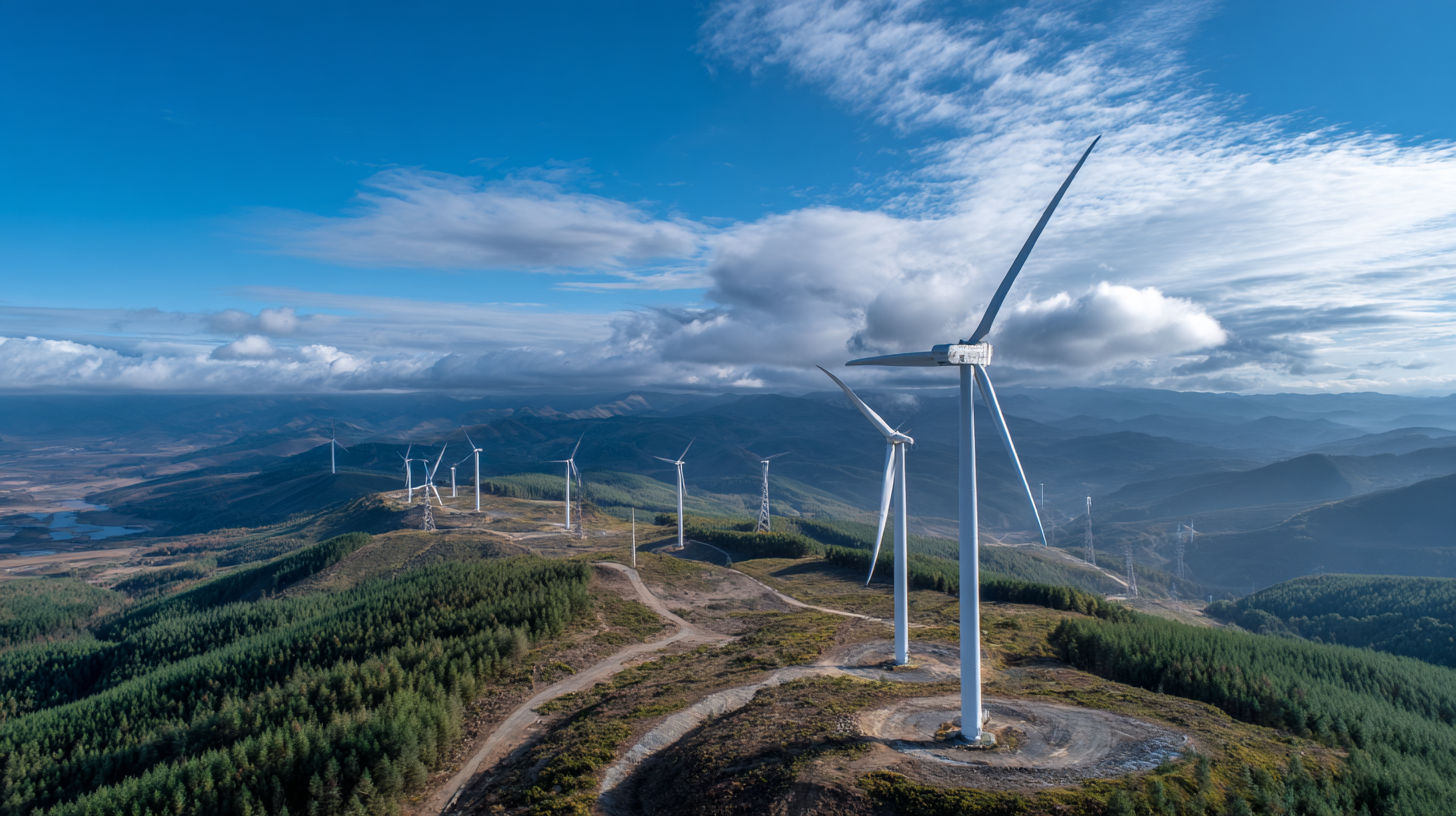In the quest for a sustainable future, harnessing innovations in New Energy has become imperative. According to the International Energy Agency (IEA), renewables accounted for nearly 30% of global electricity generation in 2020, and this figure is projected to surpass 50% by 2030 if current trends continue. Additionally, McKinsey reports that investments in renewable energy technologies have increased by over 70% in the last decade, reflecting a significant shift in both public and private spending towards sustainable solutions. As nations strive to meet their climate goals, leveraging advancements such as solar, wind, and energy storage systems will be crucial. The challenge lies in integrating these technologies seamlessly into existing energy infrastructures while ensuring accessibility and affordability for all. By tapping into the potential of New Energy innovations, we can pave the way for an equitable and environmentally viable future.

As we move toward a sustainable future, identifying and adopting promising energy innovations becomes crucial. The first step in this process is to stay informed about emerging technologies through industry publications and conferences. By regularly engaging with thought leaders and participating in relevant forums, organizations can gain insights into which innovations hold the most promise for sustainable energy development.
Tips: Engage in online communities and social media platforms focused on energy innovation. These forums often highlight breakthrough technologies and provide opportunities for collaboration with like-minded individuals and organizations.
Another effective strategy is to evaluate the scalability and efficiency of new energy solutions. Conducting pilot projects can help assess the viability of these innovations in real-world applications. Additionally, forming partnerships with startups and research institutions can facilitate access to cutting-edge technologies and shared resources, ensuring that your organization stays ahead in the energy transition.
Tips: Utilize platforms designed for startup collaboration and technology scouting to discover emerging energy solutions that align with your sustainability goals.
Integrating renewable energy solutions into existing infrastructure is crucial for achieving a sustainable future. According to the International Renewable Energy Agency (IRENA), the global energy transition could potentially reduce greenhouse gas emissions by up to 70% by 2050, contingent upon significant investment in renewable technologies. One effective strategy involves retrofitting obsolete systems with solar panel arrays and wind turbines, creating hybrid energy systems that can significantly boost efficiency. Research indicates that combining renewables with traditional energy sources can lead to a 20% reduction in energy costs while enhancing resilience against fluctuating energy prices.
Moreover, policymakers are increasingly recognizing the importance of regulatory frameworks that facilitate smooth integration. A report from the World Resources Institute highlights that improving the compatibility of existing grids with renewable energy sources can lead to a potential increase in the renewable share of the energy mix to 30-50% by 2030. Initiatives such as Smart Grids and energy storage solutions can play a vital role in stabilizing supplies and managing demand fluctuations, thus ensuring a steady transition towards a cleaner energy landscape. The emphasis on building energy-efficient infrastructures not only underscores the urgency of climate action but also represents a lucrative opportunity for economic growth in the renewable sector.
This bar chart represents the percentage utilization of various renewable energy sources in 2022. It highlights the growing contribution of renewable energy to the overall energy mix, emphasizing the importance of integrating these solutions into existing infrastructure for a sustainable future.
Implementing effective policy frameworks is crucial for fostering the adoption of new energy innovations. Governments play a pivotal role in creating an environment that encourages research, development, and commercialization of sustainable energy technologies. By offering incentives such as tax breaks, grants, and subsidies, policymakers can stimulate investment in renewable energy sources. Additionally, streamline regulatory processes can help reduce barriers to entry for new companies and technologies, facilitating a smoother transition to innovative energy solutions.

Moreover, collaboration between public and private sectors is essential for driving energy innovation. Policymakers should engage with industry stakeholders, researchers, and communities to develop policies that reflect the needs and opportunities of the energy market. This collaborative approach can lead to the establishment of innovation hubs or incubators that promote cutting-edge research and accelerate the commercialization of sustainable technologies. By prioritizing education and workforce training programs, governments can also ensure the availability of talent necessary to support the growing energy sector, thereby reinforcing the overall framework for energy innovation adoption.
The collaboration between the private sector and research institutions is crucial for harnessing new energy innovations aimed at achieving sustainability. According to a report by the International Energy Agency, achieving net-zero emissions by 2050 will require nearly $4 trillion per year in clean energy investments. Public-private partnerships can accelerate this investment, as companies often have the operational agility to scale innovations rapidly, while research institutions contribute cutting-edge technologies and insights.

For example, the U.S. Department of Energy’s National Renewable Energy Laboratory is actively working with private companies to develop advanced solar technologies. This collaboration has led to significant advancements, with solar energy costs having fallen by over 80% since 2010, making it one of the most cost-effective sources of energy today. Furthermore, a report from the World Economic Forum highlights that integrating AI and machine learning into renewable energy projects can enhance efficiency and production by up to 40%. These partnerships not only advance technology but also help build a resilient energy infrastructure essential for a sustainable future.
New energy technologies play a pivotal role in advancing sustainability. Measuring and assessing their impact requires a comprehensive framework that evaluates various dimensions, including environmental, economic, and social aspects. For instance, life cycle assessments (LCAs) can be utilized to analyze the emissions associated with different energy sources, revealing the true benefits of renewable options like solar and wind over traditional fossil fuels. By employing such methodologies, stakeholders can better understand how these innovations contribute to reducing carbon footprints while promoting energy independence.
Additionally, evaluating the economic impacts of new energy technologies involves considering job creation, energy costs, and market growth. Metrics such as return on investment (ROI) and payback periods can highlight the financial advantages of investing in renewable energy solutions. Social assessments, focusing on community engagement and accessibility, are equally vital in determining the overall effectiveness of these technologies. Engaging local populations in the implementation process can foster acceptance and ensure that the benefits of new energy projects are equitably distributed, ultimately leading to a sustainable energy future.
| How to Harness New Energy Innovations for a Sustainable Future | ||
|---|---|---|
| Energy Technology | Impact on Sustainability | Measurable Metrics |
| Solar Photovoltaics | Reduces carbon footprint, promotes renewable energy | CO2 emissions reduction (kg), energy produced (kWh) |
| Wind Energy | Sustainable energy source with low environmental impact | Turbine efficiency (%), energy output (MWh) |
| Hydro Power | Utilizes water flow for energy, minimal land disruption | Water flow rate (m³/s), energy generation (GWh) |
| Biomass Energy | Recycles waste material, lowers landfill use | Waste diverted (tons), energy content (GJ) |
| Geothermal Energy | Sustainable and constant energy source | Temperature stability (°C), energy extracted (MW) |





